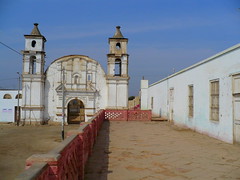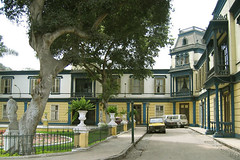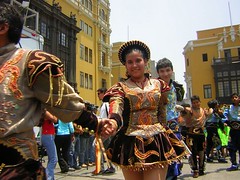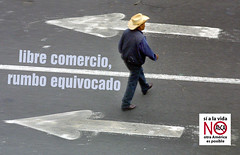Huaca Huallamarca
Part of the Lima PreColombina series
In the heart of lush residential San Isidro, the Huaca Huallamarca is one of dozens of pre-Columbian sites found within the city of Lima – a densely populated area even then. Heavily restored and open to tourists, the pyramid sits surrounded by huge modern penthouses that are a stark and unusual contrast for such an ancient ruin.
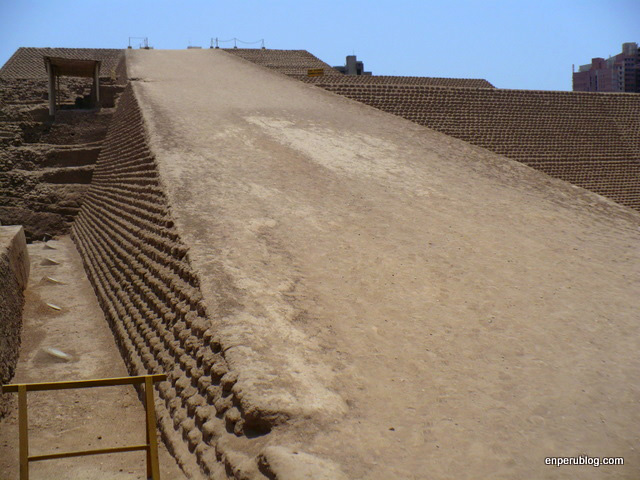
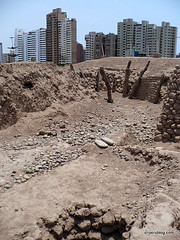
Top of Huaca Huallamarca
Between the ancient canals of Huatica and Surco was an area of land as valuable in Pre-Columbian times as it is now – then it was fertile farm land, today it is San Isidro. Julio C. Tello, the father of Peruvian archaeology, came to the conclusion that the four known administrative sub-divisions of the area that once comprised Lima must have followed the four easily observed divisions created by the life-giving canals. The area where the Huaca Huallamarca stood would in that case have been in Walla Marka – Walla (Hualla) Territory.
Just like today, Walla Marka was a land of towering constructions – the Huaca Huallamarka is a massive 4 or 5 stories high. Constructed by hand and from millions of mud bricks, this was no easy task. Great human effort was required to raise this pyramid.
Origins
One of the earlier constructions that gave rise to glorious Pre-Columbian Lima and its great cities of Maranga and Pachacamac,not to forget dozens of other settlements, the Huaca Huallamarca was built using the technology of the era – small mud bricks. Unlike those bricks of, say, the Huaca Pucllana which came a century or two later, these earlier bricks were smaller and shaped like grains of corn.
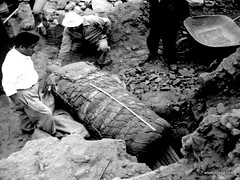
Excavation of mummies
As the Lima culture flourished and dozens more structures were erected, the Huaca Huallmarca fell from importance. When the Lima lost their political and cultural independence to the invading Wari people, the pyramid, like most in Lima, ceased to be used as a public building and instead as a cemetery. In 1958 as many as 48 mummies were retrieved from the top of the structure.
Restoration
In the 1900s, the Huaca Huallamarca found itself on the grounds of the Hacienda Pan de Azúcar – in that time San Isidro was still rural farmland.
Since the arrival of the Spanish, anything of Pre-Columbian or indigenous origin was looked down on or even purposefully defiled. Archaeological sites were considered pointless and wastes of space by Lima’s population in particular. Those sites that weren’t systematically destroyed by the Peruvian Government to make way for houses were used for purposes, such as in the case of the Huaca Pucllana, to do things such as ride motorbikes.
In the 1940s arrived things were slowly beginning to change and Peru found itself with its first archaeologists. Julio C. Tello was one of them. In 1942 he organised the first excavations of the Pan de Azúcar ruins. In the 1950s, defender of Lima’s archaeology Arturo Jiménez Borja saved the Huaca Huallamarca from being bulldozed like so many others. He managed to persuade the mayor of San Isidro to declare the pyramid a monument, to develop it as an attraction and a place to display the history in contemporary Lima. These were all very new and revolutionary ideas at that time, and something he managed to also do with other sites like Puruchuco.
Unfortunately, Peruvians still didn’t grasp the value of their historical sites, and it was the custom in those times to completely rebuild ruins, thinking that only then would they have any purpose. For the Huaca Huallamarca, this meant almost complete destruction.
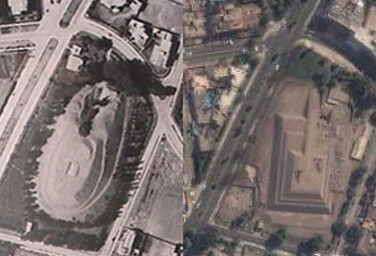
A big difference can bee seen from 1950 to 2000
Almost nothing you see today at the site is original – the pyramid does not even maintain its correct shape or direction. The site instead represents a failed attempt to give the pyramid value and preserve it for future generations.
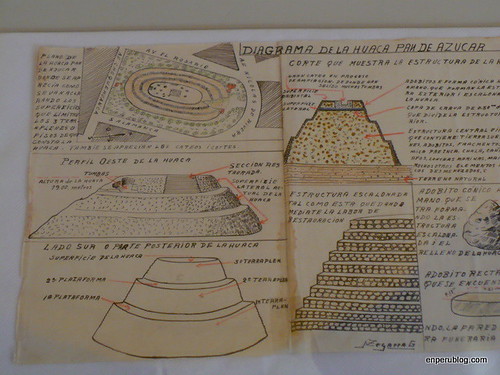
Original drawings by Arturo Jimenez
Originally, the pyramid consisted of two platforms that were rounded, not squared. The brick walls were not visible, but covered with a thick layer of flattened mud cement that was then painted yellow. Today we see a square pyramid with three platforms and a huge ramp running up the front.
Tourism
Despite it lack of authenticity, it still attracts a number of tourists. It remains an impressive site, it is beautifully lit up at night and provides great views of the surrounding area.
While the ruins themselves may fail to educate, the site museum makes up for this. It details the work of Arturo Jiménez Borja to change attitudes, and details of the studies of the site itself.
Found at Avenida Nicolás de Rivera with Avenida el Rosario, entrance is only S./5.
Tags: huaca, huaca huallamarca, julio c. tello, lima, lima culture, lima precolombina, ruins, san isidro, tombs, wari




